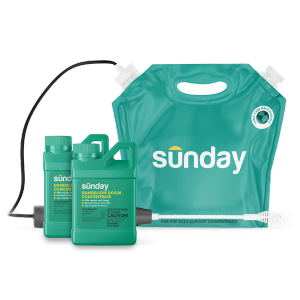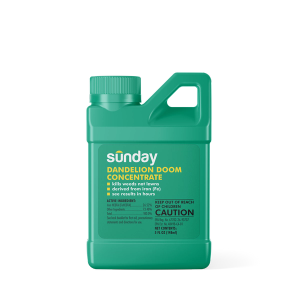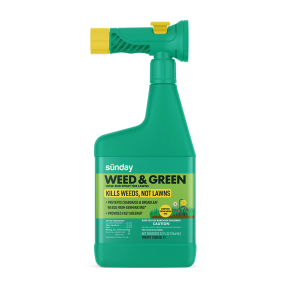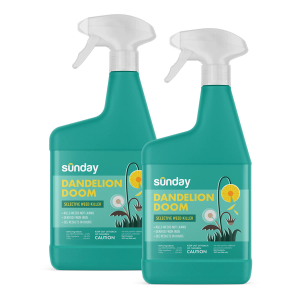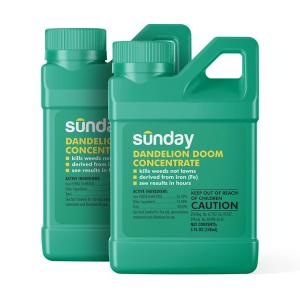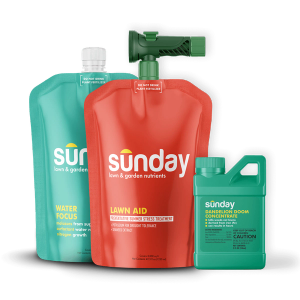Why should we be pulling weeds by hand?
Weed control is an important part of lawn care basics. It can protect your lawn mower from damage, and it helps prevent weeds from growing in. It's also an important part of Integrated Pest Management (IPM). Sunday recommends IPM to keep pests, including weeds, off your property.
When you start pulling weeds yourself, you:
- eliminate or reduce pesticide use
- reduce accidental chemical drift or spray from chemical treatment
- prevent weeds from becoming resistant to chemicals
- protect pollinators and other beneficial local wildlife
7 simple steps for pulling weeds
The best way to tackle a weed problem is to stop it before it starts—thick, healthy grass makes it difficult for weeds to take up residence in your yard. But if you do notice unwanted plants cropping up, there are a few steps to take to tackle the problem.
Figure out what kind of weeds you have
Not all weeds are bad. Legumes (like clover) can provide nitrogen-rich nutrients to your soil, while local pollinators depend on other types of weeds, including deadnettles and milkweeds. Use a weed ID guide to help identify the types of plants you see in your yard before you start pulling. This can help you decide whether or not they really need to go.
Get the right tools
Looking for a weed-puller tool? Shovels, trowels, and hand weeders may make this manual job easier, especially for weeds with long roots, like dandelions or bindweed, or those that grow in hard-to-reach places.
Pull weeds at the right time
The best time for pulling weeds varies depending on where you live, but timing it right can help you get rid of them for good.
- Pull weeds when they’re young, before they grow strong roots
- Get rid of winter annuals and perennials in the fall
- You can still pull summer annuals like crabgrass in autumn, but should focus any spot weed killer treatments elsewhere to get rid of fall weeds
Make sure to get the root
It’s important to get the whole plant, including the root, during removal. Before you start pulling weeds, water the area, but don’t saturate it. This will help loosen the soil and make it easier to remove the whole plant. If you only pull the leaves above the ground out, research indicates you’ll need to repeat the process between eight and 10 times before some perennial weeds are gone for good.
Be sure to throw away weeds
When you're done pulling weeds, make sure to toss what you pull in the trash—or, if you put them in your compost, make sure there’s no trace of weed seed. Otherwise, the plants can re-root and undo your hard work.
Patch bare spots and consider spot treatment
Patching bare spots in your lawn is important to outcompete any new or returning weeds. One effective way to do this is by overseeding your lawn. This encourages your grass to grow thick and strong, which is a natural way to keep weeds from taking root. Depending on where you live, you may have a lawn—like St. Augustine grass—that requires plugging or sod to prevent weeds from returning.
Prevent future issues with a healthy lawn
A healthy lawn makes it difficult for weeds to compete, so if you do notice they continue to sprout up, that gives you an indication about the overall health of your yard. Do you notice an excess of insects? You might need to dethatch your lawn. Has nutsedge taken up residence in your yard? It’s likely time to scale back your watering, as this plant flourishes in a wet environment.
Ultimately, the methods you'll need to grow a healthy, weed-resistant lawn depends on a variety of factors, including where you live, the type of weeds you have, and how established they are on your property. Pulling unwanted plants yourself is a great place to start. You can also learn what else you need to know about weeds to keep them out of your lawn for good.
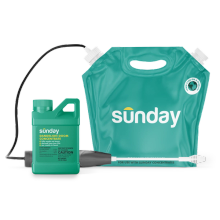
Dandelion Doom Lawn Weed Killer - Starter Pack
- Reusable, easy-fill gallon pouch and battery-powered wand sprayer
- Treats up to 224 sq. ft.
- Kills weeds down to the root
- Safe for use on lawns
- See results within hours!

Bare Repair Sun + Shade Lawn Treatment + Grass Seed (2-pack)
- Made for patching thin or bare areas in lawns
- High drought tolerance and recovery
- Resistant to disease and surface-feeding insects
- Stand up to wear and tear — great for kids and pets!
- A-LIST-approved seed for quality, sustainability, and reduced maintenance
Cited sources
Managing Weeds in Lawns, University of Minnesota Extension







